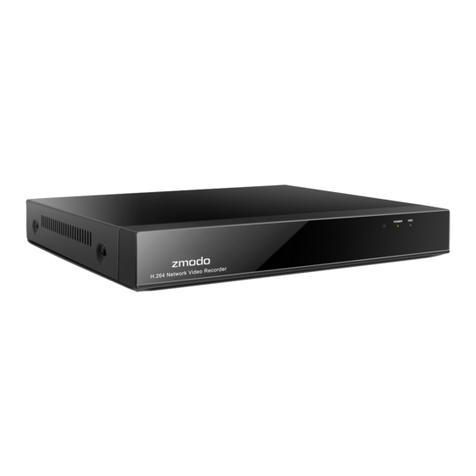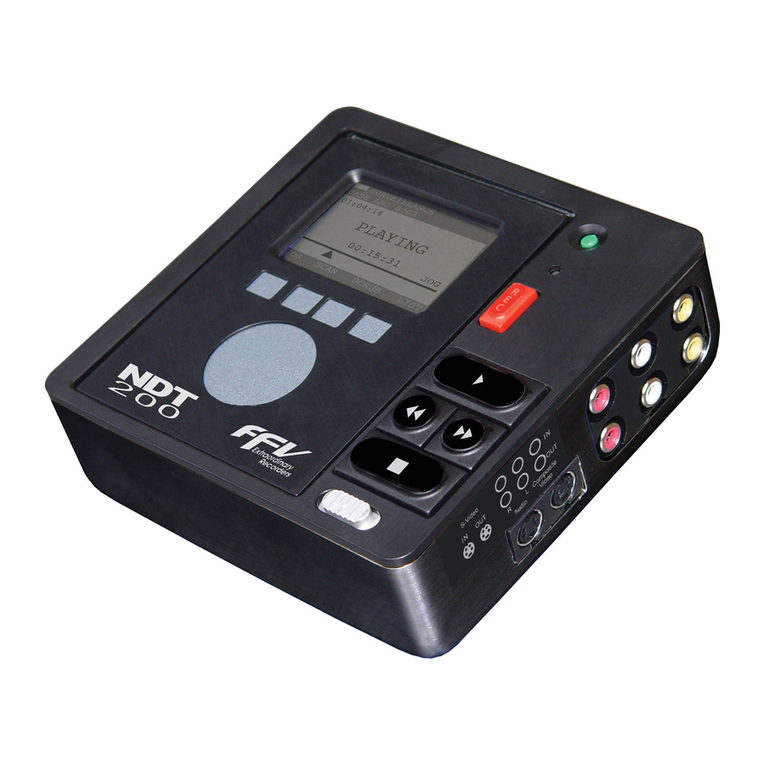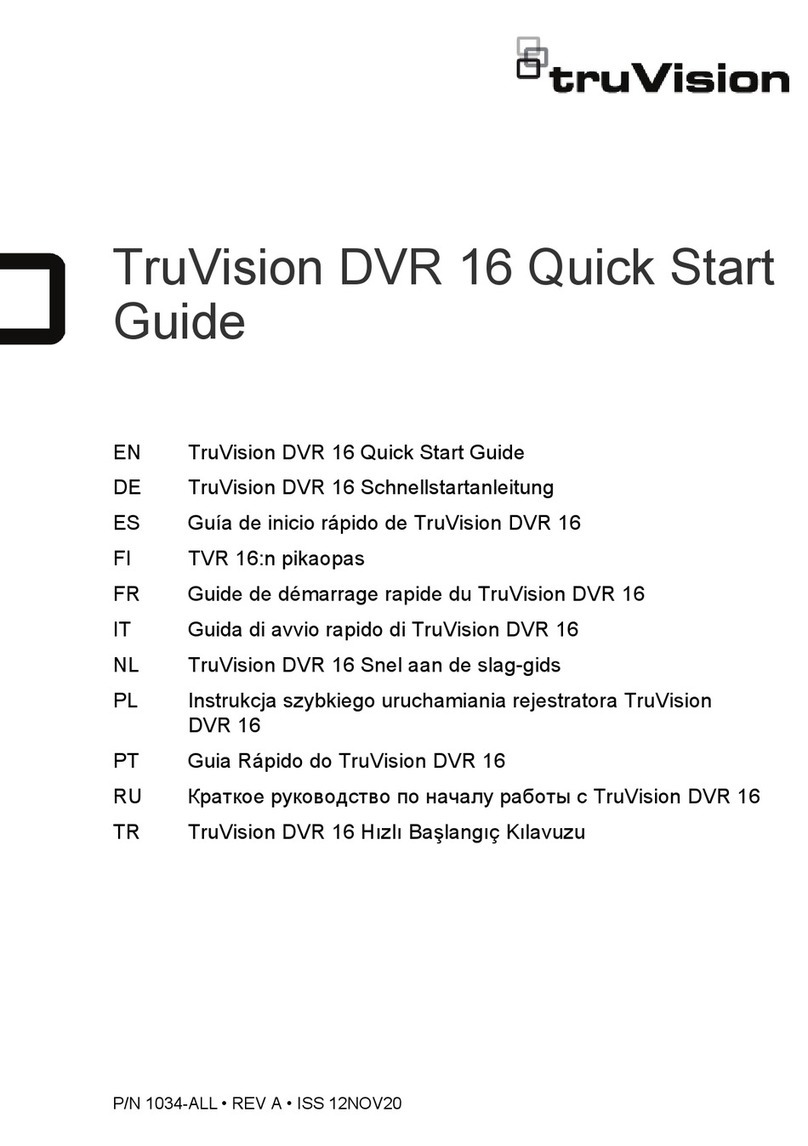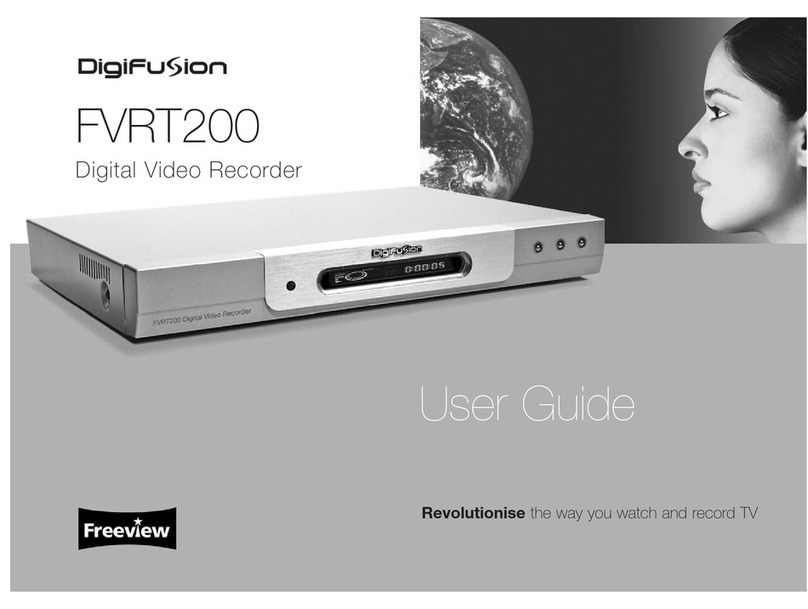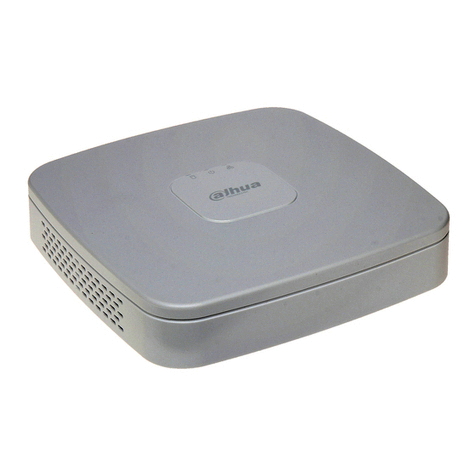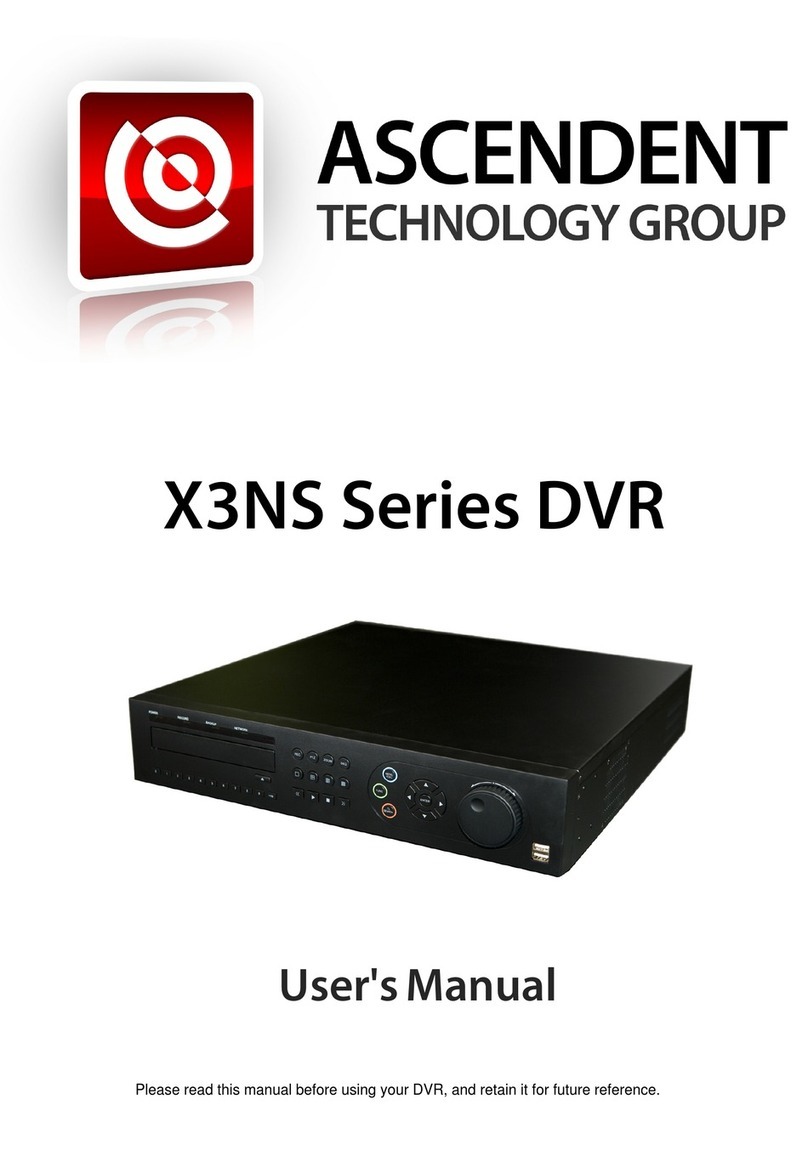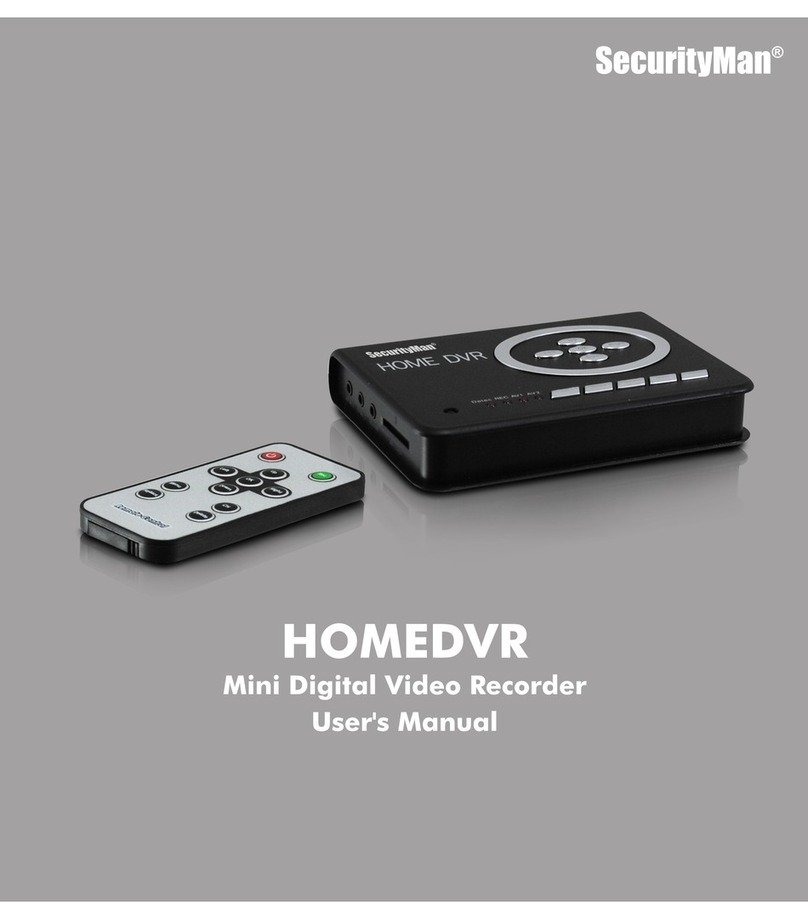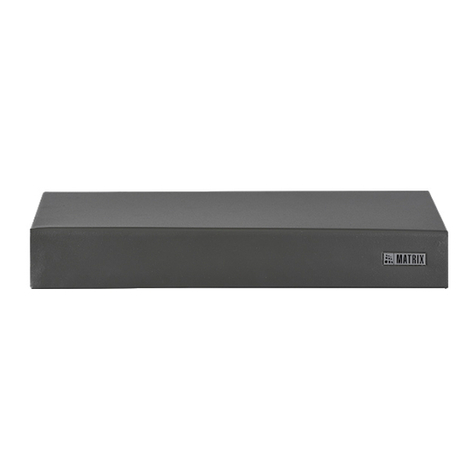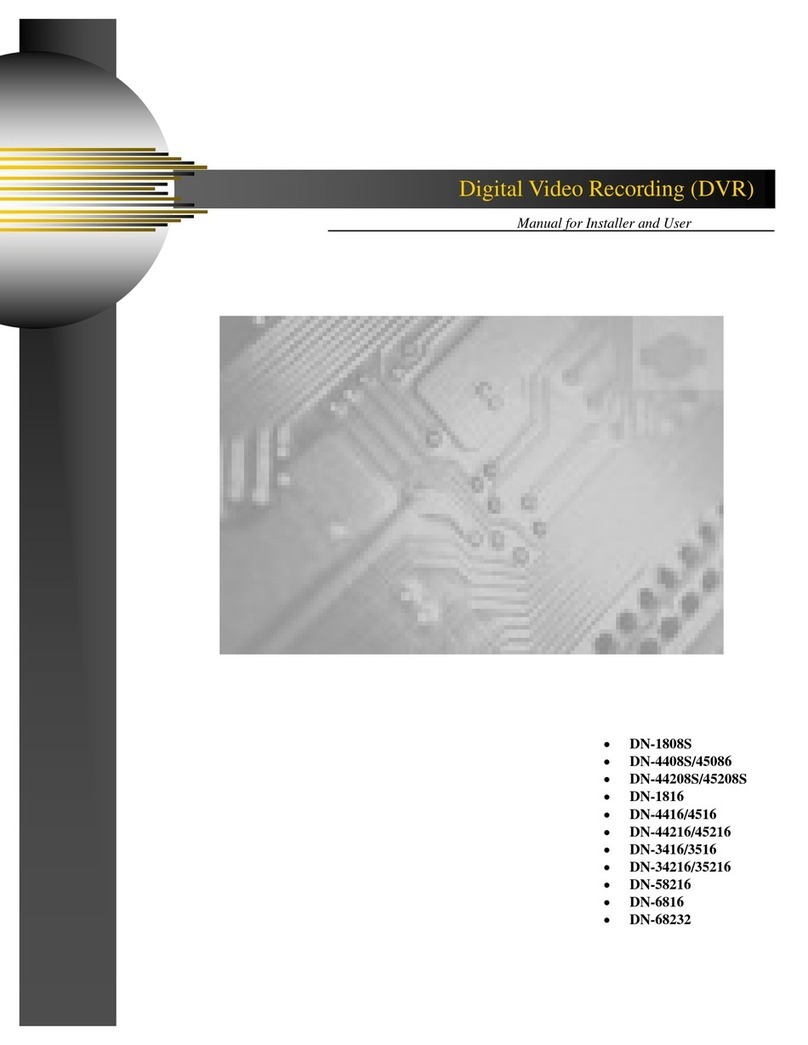Sound Devices PIX 250i Manual


PIX 250i User Guide and Technical Information
i
Table of Contents
Table of Contents
Introduction 1
Manual Conventions .............................1
Panel Descriptions 2
Front Panel......................................2
Rear Panel ......................................3
PIX-CADDY 2 (Optional)...........................5
Menu and Navigation 6
Main View ......................................6
Menu ..........................................7
Audio Screen ....................................8
File List .........................................9
LCD ...........................................11
Inputs and Outputs 12
Video Inputs ...................................12
Video Outputs ..................................12
Audio Inputs ...................................13
Audio Outputs..................................14
Ethernet 16
Video Monitoring Features 17
Exposure Assist .................................17
Focus Assist ....................................19
Zoom .........................................21
Flip Display.....................................21
Recording 22
Selecting Video File Resolution and Frame Rate .....23
Selecting a Video Codec .........................23
Interruption of Signal During Recording............24
Alignment of Audio and Video ...................24
Audio Track Arming . . . . . . . . . . . . . . . . . . . . . . . . . . . . . 24
Video Scaling and Frame Rate Conversion 25
Up and Down Conversion ........................26
Playback 28
Playback Operation .............................28
Shuttle Playback Mode ..........................29
Cue Marker ....................................29
Looping Playback ...............................30
Playback Mode .................................30
Play List........................................31
Non-Native File Playback .........................32
Playing Back Files on a Computer .................32

PIX 250i User Guide and Technical Information
v. 2.00 Features and specifications are subject to change. Visit www.sounddevices.com for the latest documentation.
ii
Table of Contents
Synchronization and Timecode 33
Sync Reference .................................34
Timecode Reader ...............................34
Internal Ambient® Lockit: Timecode Generator with Sync
Out ...........................................35
Timecode Modes................................35
Timecode Input Sources ..........................36
Synchronization/Timecode Examples ...............36
Powering 39
Network Grouping 40
Group Auto-Configuration .......................40
Grouped Transport ..............................40
Grouped Settings ...............................41
External Control 42
RS-422.........................................42
Web Interface - PIXNET ..........................42
PIXNET Unit Page Main View and Menu Tabs .......46
Triggering Recording from External Timecode.......48
Triggering Recording from SDI Flag Bits ............48
GPIO (General Purpose Input / Output) .............49
USB Keyboard ..................................50
Storage and File Management 51
Storage........................................51
Metadata ......................................53
File Management ...............................53
Setup Management and Firmware Upgrades 57
Saving and Loading Setup Files....................57
Custom Default Settings and Setup Menu Option Visibil-
ity ............................................57
Factory Restore .................................59
Firmware Upgrades .............................59
Setup Menu Options 60
File Storage ....................................60
Video .........................................61
Audio .........................................62
Timecode/Sync..................................63
LCD Monitor ...................................64
On-Screen Display ...............................64
Remote Control.................................65
Network .......................................66
System ........................................66
Quick Setup ....................................67
Button Shortcuts 68
Connector Pin Assignments 69
Appendix A - Supported Files 71

PIX 250i User Guide and Technical Information
iii
Table of Contents
Specifications 72
SDI............................................72
HDMI .........................................72
Video Input Resolutions / Rates. . . . . . . . . . . . . . . . . . . . 72
Video Codecs and Files...........................72
Up/Down/Cross Conversion .......................72
Frame Rate Conversion ..........................72
LCD ...........................................72
Audio Recording ................................73
Analog Audio ..................................73
Digital Audio ...................................73
File Storage ....................................73
Timecode and Sync ..............................73
Control ........................................74
Keyboard ......................................74
Power .........................................74
Physical ........................................74
Declaration of Conformity 75
Software License 76
Warranty and Technical Support 77

PIX 250i User Guide and Technical Information
v. 2.00 Features and specifications are subject to change. Visit www.sounddevices.com for the latest documentation.
iv
Table of Contents
Copyright Notice and Release
All rights reserved. No part of this publication may be reproduced, stored in a retrieval system, or transmitted in any form or by any
means, electronic, mechanical, photocopying, recording, or otherwise, without the expressed written permission of SOUND DEVICES,
LLC. SOUND DEVICES is not responsible for any use of this information.
Microsoft Windows is a registered trademark of Microsoft Corporation. Macintosh, OSX, and ProRes are registered trademarks of Apple,
Inc. DNxHD is a registered trademark of Avid, Inc. Other product and company names mentioned herein may be the trademarks of their
respective owners.
PIX 250i, and the sound waves logo are registered trademarks of Sound Devices, LLC.
Limitation of Liability
LIMITATION ON SOUND DEVICES’ LIABILITY. SOUND DEVICES, LLC SHALL NOT BE LIABLE TO THE PURCHASER OF THIS
PRODUCT OR THIRD PARTIES FOR DAMAGES, LOSSES, COSTS, OR EXPENSES INCURRED BY PURCHASER OR THIRD PAR-
TIES AS A RESULT OF: ACCIDENT, MISUSE, OR ABUSE OF THIS PRODUCT OR UNAUTHORIZED MODIFICATIONS, REPAIRS,
OR ALTERATIONS TO THIS PRODUCT, OR FAILURE TO STRICTLY COMPLY WITH SOUND DEVICES, LLC’S OPERATING AND
INSTALLATION INSTRUCTIONS.TO THE FULLEST EXTENT PERMITTED BY LAW, SOUND DEVICES SHALL HAVE NO LIABILITY
TO THE END USER OR ANY OTHER PERSON FOR COSTS, EXPENSES, DIRECT DAMAGES, INCIDENTAL DAMAGES, PUNITIVE
DAMAGES, SPECIAL DAMAGES, CONSEQUENTIAL DAMAGES OR OTHER DAMAGES OF ANY KIND OR NATURE WHATSOEVER
ARISING OUT OF OR RELATING TO THE PRODUCTS, THESE TERMS AND CONDITIONS OR THE PARTIES’ RELATIONSHIP,
INCLUDING, WITHOUT LIMITATION, DAMAGES RESULTING FROM OR RELATED TO THE DELETION OR OTHER LOSS OF AUDIO
OR VIDEO RECORDINGS OR DATA, REDUCED OR DIMINISHED AUDIO OR VIDEO QUALITY OR OTHER SIMILAR AUDIO OR
VIDEO DEFECTS ARISING FROM, RELATED TO OR OTHERewISE ATTRIBUTABLE TO THE PRODUCTS OR THE END USER’S USE
OR OPERATION THEREOF, REGARDLESS OF WHETHER SUCH DAMAGES ARE CLAIMED UNDER CONTRACT, TORT OR ANY
OTHER THEORY. “CONSEQUENTIAL DAMAGES” FOR WHICH SOUND DEVICES SHALL NOT BE LIABLE SHALL INCLUDE, WITH-
OUT LIMITATION, LOST PROFITS, PENALTIES, DELAY DAMAGES, LIQUIDATED DAMAGES AND OTHER DAMAGES AND LIABILI-
TIES WHICH END USER SHALL BE OBLIGATED TO PAY OR WHICH END USER OR ANY OTHER PARTY MAY INCUR RELATED TO
OR ARISING OUT OF ITS CONTRACTS WITH ITS CUSTOMERS OR OTHER THIRD PARTIES. NOTWITHSTANDING AND WITHOUT
LIMITING THE FOREGOING, IN NO EVENT SHALL SOUND DEVICES BE LIABLE FOR ANY AMOUNT OF DAMAGES IN EXCESS
OF AMOUNTS PAID BY THE END USER FOR THE PRODUCTS AS TO WHICH ANY LIABILITY HAS BEEN DETERMINED TO EXIST.
SOUND DEVICES AND END USER EXPRESSLY AGREE THAT THE PRICE FOR THE PRODUCTS WAS DETERMINED IN CONSID-
ERATION OF THE LIMITATION ON LIABILITY AND DAMAGES SET FORTH HEREIN AND SUCH LIMITATION HAS BEEN SPECIFI-
CALLY BARGAINED FOR AND CONSTITUTES AN AGREED ALLOCATION OF RISK WHICH SHALL SURVIVE THE DETERMINATION
OF ANY COURT OF COMPETENT JURISDICTION THAT ANY REMEDY HEREIN FAILS OF ITS ESSENTIAL PURPOSE.

PIX 250i User Guide and Technical Information
1
Introduction
Introduction
The PIX 250i is a rack-mountable, production video recorder with extensive audio and video pro-
cessing capabilities. The foundation of the PIX 250i is hardware-based, 10-bit video up/down/cross
conversion, and hardware-based encoding to Apple ProRes and Avid DNxHD codecs (both up to
12-bit 4:4:4). These features allow for fast, reliable acquisition of video (at any standard HD or SD
resolution and frame rate) and audio (up to 16 tracks from Analog, AES, HDMI, or SDI sources) to
ready-for-edit, industry standard QuickTime .mov files.
Files are recorded simultaneously on (up to) 2 separate, 2.5” SSD storage devices via two front panel
PIX-CADDY slots. This redundancy in local, removable storage devices, coupled with standard,
Ethernet-based file transfer features further reduces steps in the production workflow. Gigabit Ether-
net network ports enable remote access to recorded files and the ability to transfer them quickly into
a post-production environment.
Full-featured precision timecode and sync reference I/O using Ambient Clockit core technology is
provided to allow tight synchronization with external equipment in complex multi-machine configu-
rations. The PIX 250i supports various external control options: RS-422, GPIO, SDI flags, Timecode
triggering, and an embedded web server for network-based remote control. Network Grouping
functionality enables linked, frame-synchronized recording and playback of multiple PIX 250i units
connected to a standard Ethernet network.
This User Guide details installation and operation of the PIX 250i. This User Guide corresponds to
PIX 250i firmware version 2.000. User Guide revisions are released at the same time as firmware
updates and available online:
http://www.sounddevices.com/products/pix250i/downloads/
Manual Conventions
Several formatting features have been included to make navigating the guide easier.
• Physical buttons on the PIX 250i are represented with capital letters (REC button, MENU button,
etc). All physical button names are detailed in the Panel Descriptions section.
• Button combinations are represented with the plus (+) symbol. For example: “Press LCD button+
AUDIO button” means to first hold down the LCD button, then press the AUDIO button, and
finally release both buttons.
• Setup Menu items are indicated with this text: [Menu Category - Parameter], where the menu
category is one of the items in the list displayed when the MENU button is pushed, and the
parameter is an item in the list displayed when that category is selected (by pushing in on the
Control Knob).
• Blue italicized text references sections of the user guide containing contextually relevant informa-
tion. When viewing this document on a computer, this text can be clicked to jump to the named
section.

PIX 250i User Guide and Technical Information
v. 2.00 Features and specifications are subject to change. Visit www.sounddevices.com for the latest documentation.
2
Panel Descriptions
Panel Descriptions
Front Panel
1 2 3 54 6 7 8 9
101214 13 1115
1) Control Knob
The Control Knob can be both turned and
pressed. Use the Control Knob to navi-
gate between menu settings and to select
menu items. Pressing during playback or
stop will toggle Shuttle mode. Turning
while playback is paused will jog forward
or backward by single frames.
2) AUDIO Button
Displays the Audio Screen. From the
Audio Screen: Select audio input sources,
Arm/disarm tracks, Set audio input gain
and delay, View audio input levels, and
Edit audio track names.
3) LCD Button
Toggles the On-Screen Display. Hold for 2
seconds to toggle LCD on/off.
4) Handle
This handle is designed to provide a grip-
ping point for tilting down the LCD.
5) LCD Display
Displays operating information when the
On-Screen Display (OSD) is active(See
“On-Screen Display”, page 6), user in-
terface, source video, and playback video.
5-inch display; 800x480 resolution.
6) FILES Button
Displays the File List View. Press FILES +
Fast Forward (>>) during record or play-
back to add a Cue Marker. Press FILES +
Rewind (<<) to delete a Cue Marker.
7) MENU Button
Displays the Setup Menu.
8) Play Button
Plays the most recently recorded file
when pressed. In the File List View, plays
the selected video file from the File List.
Pauses video during playback. Press and
hold Play to activate Loop Play.
9) Stop Button
Stops an active recording or playback.
When Stopped, hold the Stop button to
display the next filename.

PIX 250i User Guide and Technical Information
3
Panel Descriptions
10) Fast Forward Button
When Stopped, press to cue up the next
file for Playback. During Playback or
Pause, press once to jump to the next Cue
Marker, press and hold to increase play-
back speed. Continue to hold for faster
speeds.
11) REC Button
Begins recording. Optional: Splits the
recording and begins writing a new
file when pressed while recording.
[System - Rec Button File Split].
12) Rewind Button
When Stopped, press to cue up the previ-
ous file for Playback. During Playback
and Pause, press once to jump to the
previous Cue Marker or beginning of the
file, press and hold to reverse playback
speed. Continue to hold for faster reverse
speeds.
13) Headphone Volume Knob
Adjusts the overall volume of the head-
phones. NOTE: the headphone output is
capable of ear-damaging levels. Take care
when adjusting among signal sources.
14) Headphone Output 1/4”
TRS stereo headphone connector. Can
drive headphones from 8 to 100 ohms to
very high headphone levels.
15) USB Keyboard Input
USB A female connector to connect a
USB keyboard. Keyboards can be used to
navigate and control the PIX 250i. Key-
boards with integrated USB hubs are not
compatible.
Rear Panel
42 3
11
1
6
1213141516 910
875
1) DC Power Input (XLR 4-pin)
Accepts 10–27 volts DC. XLR 4-pin con-
nector is wired pin-1 ground, pin-4 posi-
tive (+). (See “Powering”, page 39)
2) Timecode Output (BNC)
SMPTE timecode output.
3) Timecode Input (BNC)
SMPTE timecode input.
4) SYNC Output (BNC)
Selectable Genlock or Wordclock output.
Configured with Setup Menu option
[Timecode/Sync - Sync Out].
5) SYNC Input (BNC)
Selectable Genlock or Wordclock input.
Configured with Setup Menu options
[Timecode/Sync - Sync Ref]

PIX 250i User Guide and Technical Information
v. 2.00 Features and specifications are subject to change. Visit www.sounddevices.com for the latest documentation.
4
Panel Descriptions
6) Digital Audio Input/Output (DB-25)
8 channels of AES digital audio input
and 8 channels of AES digital output. (See
“Connector Pin Assignments”, page 69)
7) Analog Audio Outputs (XLR)
2 channels of balanced, line-level analog
audio outputs.
8) Analog Audio Inputs (XLR)
2 channels of balanced, line-level analog
audio inputs.
9) Ethernet (RJ-45)
Attaches to 1G or 100M Ethernet net-
works. Provides Network Grouping (See
“Network Grouping”, page 40), web ac-
cess for remote control (See “Web Interface
- PIXNET”, page 42), and network file
service. (See “Storage and File Manage-
ment”, page 51)
10) RS-422 Control (DB-9)
Connects to RS-422 Controllers for exter-
nal control of the PIX 250i. (See “RS-422”,
page 42)
11) GPIO Remote (Phoenix 10-pin)
Logic contact points for remote control.
(See “GPIO (General Purpose Input / Out-
put)”, page 49)
12) SDI Video Input (BNC)
SDI video input. Accepts 3G-SDI, HD-
SDI, or SD-SDI signal with up to 16 chan-
nels of embedded audio.
13) SDI Video Output (BNC)
SDI video output. Provides 3G-SDI, HD-
SDI, or SD-SDI signal with up to 16 chan-
nels of embedded audio.
14) HDMI Video Input (HDMI)
Accepts HDMI (1.4a) signal with 8
channels of embedded audio. The PIX
250i does not record or display content
encoded with HDCP.
15) HDMI Video Output (HDMI)
Provides HDMI (1.3) signal with 8 chan-
nels of embedded audio.
16) USB Connection
Factory use only.

PIX 250i User Guide and Technical Information
5
Panel Descriptions
PIX-CADDY 2 (Optional)
The PIX-CADDY 2 is an accessory to connect approved 2.5” drives to the front-panel drive bays.
When removed from a PIX 250i, the PIX-CADDY 2 operates as a high-speed drive interface to Mac
OS and Windows computers via the onboard FireWire800, USB 3.0, or the optional PIX-DOCK Thun-
derbolt interface.
For reliable operation, it is imperative that the 2.5” drive be firmly screwed to the PIX-CADDY 2 with
the supplied screws.
6
5
3
4
7
2
1
1) FireWire 800
FireWire 800 or 400 (backward compat-
ible). Requires a powered FireWire 800 or
400 port.
2) eSATAp
High-speed data transfer over 5V
eSATAp. Requires a 5V powered eSATAp
port.
3) USB 3.0
High-speed data transfer over USB 3.0
(backward compatible with USB 2.0).
4) 2.5” Drive Slot
Connector for approved 2.5-inch SATA II
and SATA III drives. Sound Devices main-
tains a list of tested and approved SSD
drives for use with PIX video recorders.
Visit www.sounddevices.com/approved for
an up-to-date list of tested and approved
drives.
5) Activity LED
Illuminates when recording, playing,
reading, or writing to the attached 2.5”
drive. Do not remove the caddy while the
Activity LED is illuminated. LED does not
illuminate when connected to a computer’s
eSATA port.
6) Release Latches
Secures the PIX-CADDY to the recorder.
Press both latches to remove the caddy
assembly.
7) Screw Holes
For reliable operation, it is imperative that
the 2.5” drive be firmly screwed to the
PIX-CADDY 2 with the supplied screws.

PIX 250i User Guide and Technical Information
v. 2.00 Features and specifications are subject to change. Visit www.sounddevices.com for the latest documentation.
6
Menu & Navigation
Menu and Navigation
Main View
The Main View displays the live or playback video and the On-Screen Display. The Main View is the
default view which appears when no other views or menus are selected.
On-Screen Display
The On-Screen Display (OSD) provides information superimposed over the Main View. From the
Main View, the LCD button will toggle the OSD on and off. Items included in the OSD are config-
ured with the Setup Menu option [On-Screen Display]. When factory settings are loaded from the
[Quick Setup] menu item all OSD items are shown.
1
2
3
4
5
6
7
8
9
10
11
12
13
14
15
16
On-Screen Display Menu
Item Description
1. Audio Metering Levels of audio tracks 1 and 2. Shown here in Top (wide) mode. Can be re-positioned with
Setup Menu option [On-Screen Display - Audio Metering]
2. Headphone Source Current headphone routing selection.
3. Date/Time The current time and date.
4. Group Number Displays the selected network group in [Network - Network Group].
5. Input - Video Resolution and frame rate of the video input signal.
6. File Resolution/Rate Displays the resolution and frame rate of the file being recorded or played. The File Resolution/
Rate field is displayed in different colors to indicate conversion methods. (See “Video Scal-
ing and Frame Rate Conversion”, page 25)
7. File Codec The presently selected video codec. This information will update for recording and playback.
8. Sync Reference The current source of synchronization. This information will update for recording and playback.
9. Cue Marker Cue marker and playback looping information is displayed here during record and playback.
10. Timecode Current timecode and frame rate of the recording or playing file.

PIX 250i User Guide and Technical Information
7
Menu & Navigation
Item Description
11. Audio Source Audio sample rate, bit depth, and channel count.
12. RS-422 Status RS-422 is displayed when [Remote Control - RS-422] is on.
13. IP Address Network IP address of the PIX 250i
14. Drive 1-4 (D1-D4)
status
Displays the status and remaining record time of each drive (when video input is present) or
remaining space in GB (when no video input is present), “Offline” (when no media is present),
“Mounting” (when media is becoming ready), “No Fmt” (when media is not formatted), or “Net-
work” (when [Network - Ethernet File Transfer] is set to On). An asterisk indicates
that the drive is On in [File Storage - Record to Drive] when recording or stopped.
When recording, all drives that are being written to are displayed in red. When Stopped or
in Playback, the green drive is the current default playback drive. Drive status field is orange
when a drive is busy.
15. ABS Time Absolute Time: Displays the elapsed time of the file being recorded or played and the transport
status (Stop, REC, Play, Fast Forward, and Rew).
16. File Name Name of the current file. Holding Stop shows the next file name
Target drives, ABS Time, File Name, Timecode, and Cue Marker OSD fields change colors to indicate
the various transport states, White = Stopped, Red = Record, Green = Play/Pause, Blue = Rew/Fast
Forward/Shuttle.
Menu
Press the MENU button (keyboard: F1) to enter the Setup Menu. Most settings of the PIX 250i are
accessed and changed from the Setup Menu. Navigate between menu items by turning the Control
Knob and pressing it to select. When in a menu, press the MENU button to go back to the previous
screen.
The Setup Menu is not accessible when in Record or Playback. If the Setup Menu is open when record or
playback is engaged, the Setup Menu will close and return to the Main View.

PIX 250i User Guide and Technical Information
v. 2.00 Features and specifications are subject to change. Visit www.sounddevices.com for the latest documentation.
8
Menu & Navigation
Audio Screen
From any screen, press the AUDIO button (keyboard: F3) to view the Audio Screen. The Audio
Screen displays all audio input levels and provides configuration of Track Arming, Track Naming,
Input Source selection, Input Gain, and Input Delay. The Audio Screen by default displays 16 tracks
at a time. This can be changed to 8 or 16 track displays in [Audio - Audio Screen Meters].
To make adjustments in the Audio Screen:
1. Rotate the Control Knob to move the blue highlighter to the desired track.
2. Press the Control Knob to focus the highlighter on parameters for the track. The highlighter
will become orange.
3. Rotate the Control Knob to move the orange highlighter to the desired parameter.
4. Press the Control Knob to edit the highlighted parameter. The highlighter will become blue.
5. Rotate the Control Knob to adjust the value.
6. Press the Control Knob to set the value. The highligher will become blue and once again
highlight the entire track.
Headphone Source
Drive Statuses
Audio Sample Rate / Bit Depth
Timecode Frame Rate
Timecode Value
Take Name
Transport StatusAbsolute Time
Expanded Meters
Press the AUDIO button while viewing an Audio Screen to toggle Expanded Meters. Input Source,
Gain, and Input Delay parameters are removed to accommodate for higher resolution meters.

PIX 250i User Guide and Technical Information
9
Menu & Navigation
Other audio related settings are accessible from the Setup Menu option Audio.
File List
Press the FILE button (keyboard: F2) to display the File List; A list of all of the recorded takes. Takes
are arranged chronologically and grouped by Reel. Turn the Control Knob to highlight an item. Press
Play to start playback of the highlighted take. Press the Control Knob to perform functions based on
which item is highlighted:
6 7 8
5
2
3
4
1
1) Next Take
Information for the next take.
2) Current Take
Information for the current take.
3) Reel Group
A group of clips organized by reel num-
ber. Takes below are part of the indicated
reel. Number in brackets indicates num-
ber of clips in the reel. Press Control Knob
to expand or collapse list of takes in this
reels.
4) Multi-File Take
Take consisting of multiple files. Number
of files in the take represented by number
in brackets. Press Control Knob to expand
or collapse list of files in this take. Files
indicated by indented text.
5) Take
Represents a single take. Press Control
Knob to view Take Details Screen or edit
metadata. Press Play to play take imme-
diately.
6) Name
The name or number of the take, file,
or reel. Number in brackets indicates
amount of clips in the reel or amount of
files in the take.
7) Date and Time
Date and time the take or reel was cre-
ated.
8) Size
Total size of the take, file, or reel.
The selected drive is displayed on the top of the screen. To view the contents of other drives, scroll
to the top of the list; A pop up box appears with a list of all available drives. Select the desired drive
and press the Control Knob.

PIX 250i User Guide and Technical Information
v. 2.00 Features and specifications are subject to change. Visit www.sounddevices.com for the latest documentation.
10
Menu & Navigation
While in the File List press the FILES button to collapse all Reel folders and multi-file takes to ease
file navigation.
It is recommended that files in the same Play List or reel be of the same resolution, frame rate, codec, and/
or sample rate.
Take Details Screen
From the File List, highlight a file and press the Control Knob to view the Take Details Screen. To
view Multi-file Take details, highlight the menu item with file extension then press and hold the
Control Knob. File Details include:
• Start time code
• Timecode frames-per-second
• Timecode user bits
• Video resolution
• Video frame rate
• Video codec
• Media
• File size
• Duration
• Audio Format
File functions are also available in the Take Details Screen:
• Delete: Deletes the take or le (Conrmation dialog). (See “Deleting a File”, page 55)
• Add to Play List: Adds the take to the Play List. (See “Play List”, page 31)
• Remove from Play List: Removes the take from the Play List. (See “Play List”, page 31)
• Empty Play List: Empties the entire Play List. (See “Play List”, page 31)

PIX 250i User Guide and Technical Information
11
Menu & Navigation
LCD
From the Main View (See “Main View”, page 6), press the LCD button
to toggle the On-Screen Display (OSD) on or off, press and hold the
LCD button for two seconds to turn off the LCD, press again to turn on.
From all other views, press the LCD button to return to the Main View.
The LCD Control Panel provides adjustments to the LCD backlight,
image brightness, image contrast, image chroma, and button backlight.
To access the LCD Control Panel, press LCD button + Control Knob.
The parameter with the orange slider bar is the selected parameter. To
toggle through the parameters press the Control Knob. To adjust the
setting, turn the Control Knob. Press LCD again to exit back to the Main
View.

PIX 250i User Guide and Technical Information
v. 2.00 Features and specifications are subject to change. Visit www.sounddevices.com for the latest documentation.
12
Inputs & Outputs
Inputs and Outputs
Video Inputs
The PIX 250i accepts video input signals over HDMI, HD-SDI, and single link 3G-SDI Level A and B.
The PIX 250i does not accept analog video signals. See the Specifications section for a complete list of
supported frame rates.
HDMI
The PIX 250i accepts HDMI version 1.4a video and audio. Supported video resolutions and rates are
listed in the Specifications section. The PIX 250i HDMI input accepts up to 10-bit, 4:4:4 video, up to 8
channels of embedded audio. The PIX 250i also accepts Sony’s proprietary timecode over HDMI. The
digital audio embedded in the HDMI stream (32 kHz – 192 kHz) is always re-sampled to 48 kHz.
720p30/29.97, 720p25, and 720p24/23.976 are not supported on the HDMI input or the HDMI output.
HDCP copy protection prevents direct digital-to-digital copying of copyrighted material. Protected
DVDs, Blu-Rays, and streaming content with HDCP encryption is not valid content and will be ignored
by the PIX 250i.
SDI
The SDI input on the PIX 250i accepts video with embedded audio (up to 16 channels) and embed-
ded SMPTE timecode. This connection accepts digital video up to 12-bit, with up to 4:4:4 color sam-
pling. Unlike the HDMI interface, which auto-negotiates rates between devices, what comes out of a
camera’s SDI output is received by the PIX 250i with no auto-negotiation or sample rate conversion.
The PIX 250i supports 3G-SDI single link, but not dual-link HD-SDI.
Timecode over SDI is not available when recording in standard definition
Video Outputs
Both HDMI and SDI outputs are active simultaneously. This allows for conversion from SDI to
HDMI and HDMI to SDI.
The output video signal source is the signal present at the currently selected video input (Setup
Menu option [Video - Video Input]), except during video playback. The resolution and frame rate of
the output stream is determined by the Setup Menu option [Video - File Resolution/Rate] setting,
except during video playback. The SDI Output is capable of sending HD (4:2:2 10-bit) or 3G (4:4:4
12-bit), this is set in [Video - SDI Output Type].Video playback signal is sent to the HDMI and SDI
Outputs.
Standard Definition video is always output using HD Mode because 3G does not support Standard
Definition.

PIX 250i User Guide and Technical Information
13
Inputs & Outputs
The output video stream contains up to 16 tracks of embedded audio for SDI and 8 tracks for HDMI.
Timecode and record start and stop flags are included on the SDI output.
Timecode overlay can be added to the HDMI and/or SDI output signal in
[Video - Video Output OSD]. The timecode overlay is displayed in various colors to indicate the cur-
rent transport state of the PIX 250i: White = Stopped, Red = Record, Green = Playback.
Audio Inputs
The PIX 250i can record up to 16 tracks from a variety of audio input sources:
Input Type Count Connector(s) Gain Details
Analog 21-2: XLR (LINE IN 1/2) Off, -25
to 20 dB Balanced, Line-level, XLR.
AES Digital 81-8: DB-25 (CH 1-8 AES IN/OUT) Off, -25
to 50 dB
Selectable between AES or HDMI with Setup
Menu option [Audio - HDMI/AES Select]
HDMI Digital 81-8: HDMI Input Off, -25
to 20 dB
Selectable between AES or HDMI with Setup
Menu option [Audio - HDMI/AES Select]
SDI Digital 16 1-16: SDI Input Off, -25
to 20 dB
Analog Audio Inputs
The PIX 250i has two, high-performance, line-level analog audio inputs on XLR3-M connectors.
Digital Audio Inputs
The PIX 250i accepts digital audio from HDMI, SDI, and AES/EBU inputs. All audio is sampled at
48kHz.
AES3
The PIX 250i accepts AES3 (AES/EBU) digital signals with sampling rates from 32 kHz up to 192
kHz and bit depths up to 24-bits. AES3 inputs are sample rate converted to 48 kHz.
HDMI / SDI Embedded Audio
The PIX 250i accepts 8 channels of embedded digital audio on the HDMI Video Input or 16 channels
of digital audio on the SDI input.
Sample Rate Converters
All digital inputs have Sample Rate Converters. These help ensure synchronization of digital audio
from multiple sources.
Choosing Audio Sources
Audio Input Source is selected in the Audio Screen in the Source column. To setup an input:
1. Press the AUDIO buon to access the Audio Screen. If the Source column is not visible, press
the AUDIO buon again to reveal it.
2. Rotate the Control Knob to select the desired track.
3. Press the Control Knob to focus the highlighter on the selected track’s parameters. The high-
lighter will become orange and focus on a single column in the track.
4. Rotate the Control Knob to highlight the Source column.

PIX 250i User Guide and Technical Information
v. 2.00 Features and specifications are subject to change. Visit www.sounddevices.com for the latest documentation.
14
Inputs & Outputs
5. Press the Control Knob to open the Audio Source options window. Select the general type of
input to be used from O, Line In, HDMI/AES In, or SDI In and press the Control Knob again
to open up all options for that input type.
6. Press the Control Knob to make a selection and exit the Audio Input Source options window.
For quick general audio source configurations use [Audio - Audio Input Quick Setup]. (See “Setup
Menu Options”, page 60)
Input Gain Control
Audio Input Gain is set in the Audio Screen in the Gain column. To adjust the gain of an audio track:
1. Press the AUDIO buon to access the Audio Screen. If the Gain column is not visible, press
the AUDIO buon again to reveal it.
2. Rotate the Control Knob to select the desired track.
3. Press the Control Knob to focus the highlighter on the selected track’s parameters. The high-
lighter will become orange and focus on a single column in the track.
4. Rotate the Control Knob to highlight the Gain column.
5. Press the Control Knob to edit the gain value. Turn the Control Knob to adjust the gain in 1
dB increments. Gain is adjusted in real time. The available gain range depends on the audio
input source. (See “Audio Inputs”, page 13)
6. Once the desired gain value is set, press the Control Knob to exit the gain window.
Input Gain can be linked in [Audio - Input Gain Linking]. When linked, adjust any channel’s gain
value to adjust the gain of all channels. Gain offsets from channel to channel are maintained. If this is
not desired, unlink the gain and set all gain values to the same value, then re-link input gain.
Input Delay Control
Audio Input Delay is set in the Audio Screen in the Delay column. Delay is adjustable from 0 to 400
mS. To adjust the delay of an audio track:
1. Press the AUDIO buon to access the Audio Screen. If the Delay column is not visible, press
the AUDIO buon again to reveal it.
2. Rotate the Control Knob to select the desired track.
3. Press the Control Knob to focus the highlighter on the selected track’s parameters. The high-
lighter will become orange and focus on a single column in the track.
4. Rotate the Control Knob to highlight the Delay column.
5. Press the Control Knob to edit the delay value. Turn the Control Knob to adjust the delay in 1
mS increments.
6. Once the desired delay value is set, press the Control Knob to exit the delay window.
Input Delay can be linked in [Audio - Input Delay Linking]. When linked, adjust any channel’s delay
value to adjust the delay of all channels. Delay offsets from channel to channel are maintained. If this
is not desired, unlink the delay and set all delay values to the same value then re-link input delay.
Audio Outputs
Analog Audio Outputs
The two analog outputs of the PIX 250i are active-balanced, line-level outputs (+18dBu max).
At factory default, the source of the Analog Line Outputs 1-2 is tracks 1 and 2, respectively.
Table of contents
Other Sound Devices DVR manuals

Sound Devices
Sound Devices PIX 240 Manual

Sound Devices
Sound Devices PIX 220 User manual
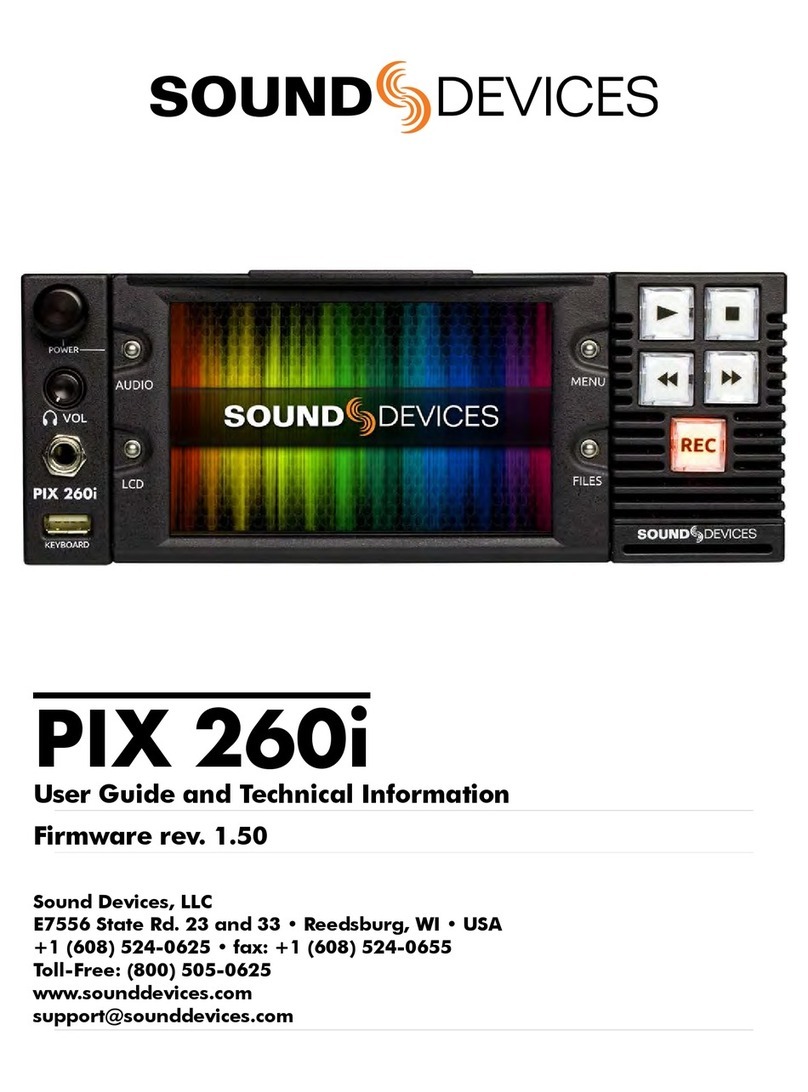
Sound Devices
Sound Devices PIX 260i User manual

Sound Devices
Sound Devices PIX 260i User manual

Sound Devices
Sound Devices PIX 220i Manual
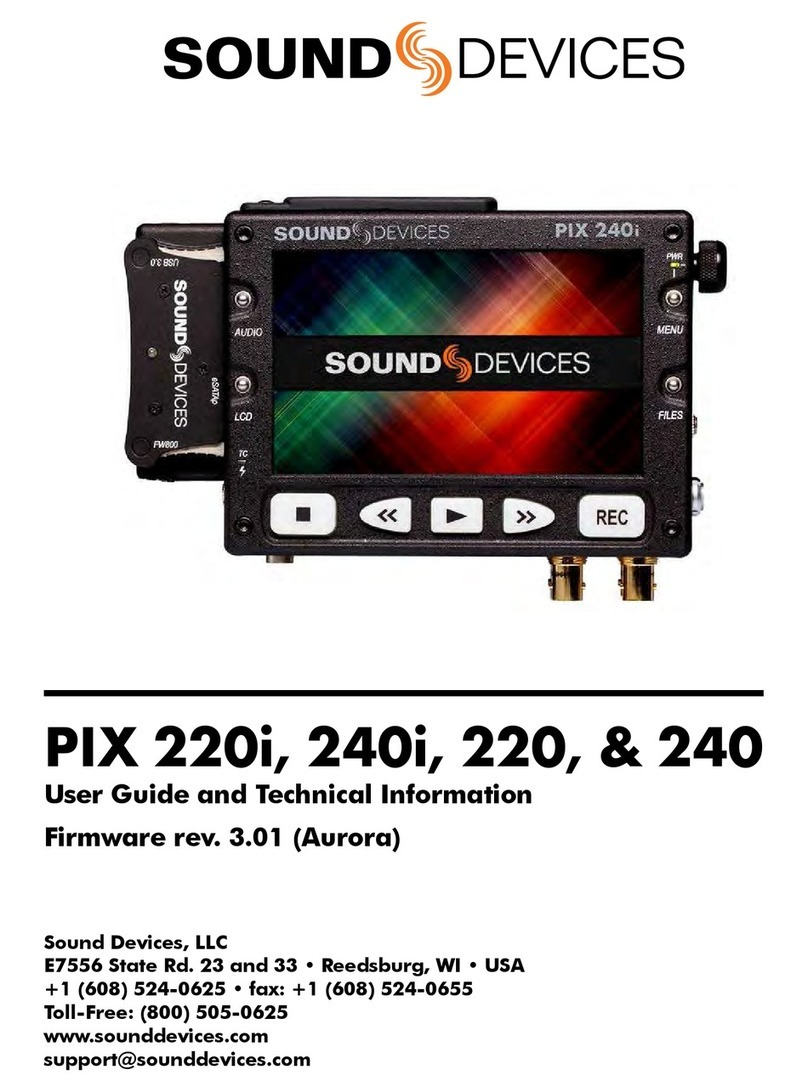
Sound Devices
Sound Devices PIX 220i Manual

Sound Devices
Sound Devices PIX 260i Manual
Popular DVR manuals by other brands
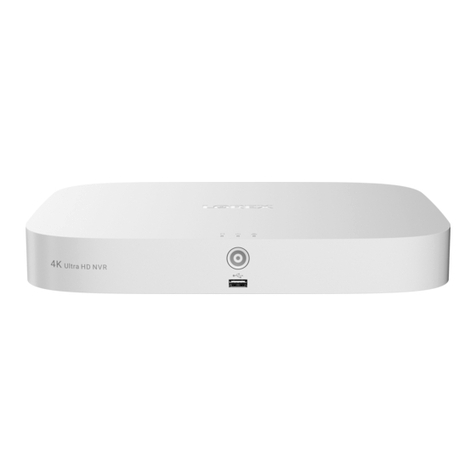
Lorex
Lorex N843 Series Quick setup guide

Video Devices
Video Devices PIX 250i quick start guide

NextWave Digital
NextWave Digital PVR-3690 operating instructions
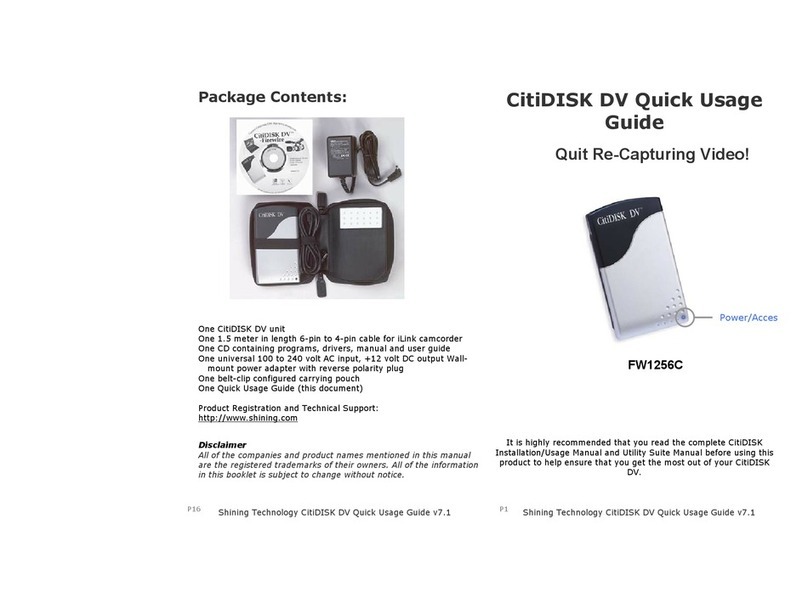
Shining Technology
Shining Technology CitiDISK DV FW1256C Quick use guide
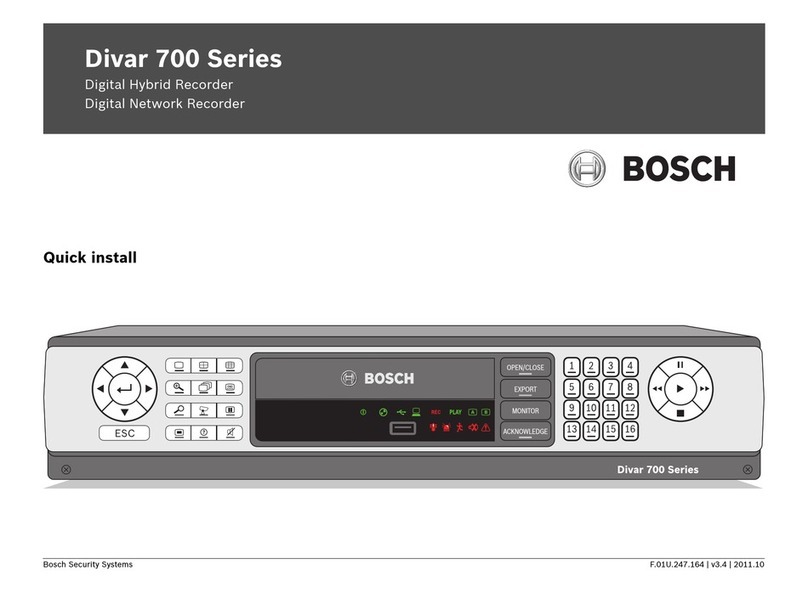
Bosch
Bosch Divar 700 Series Quick install
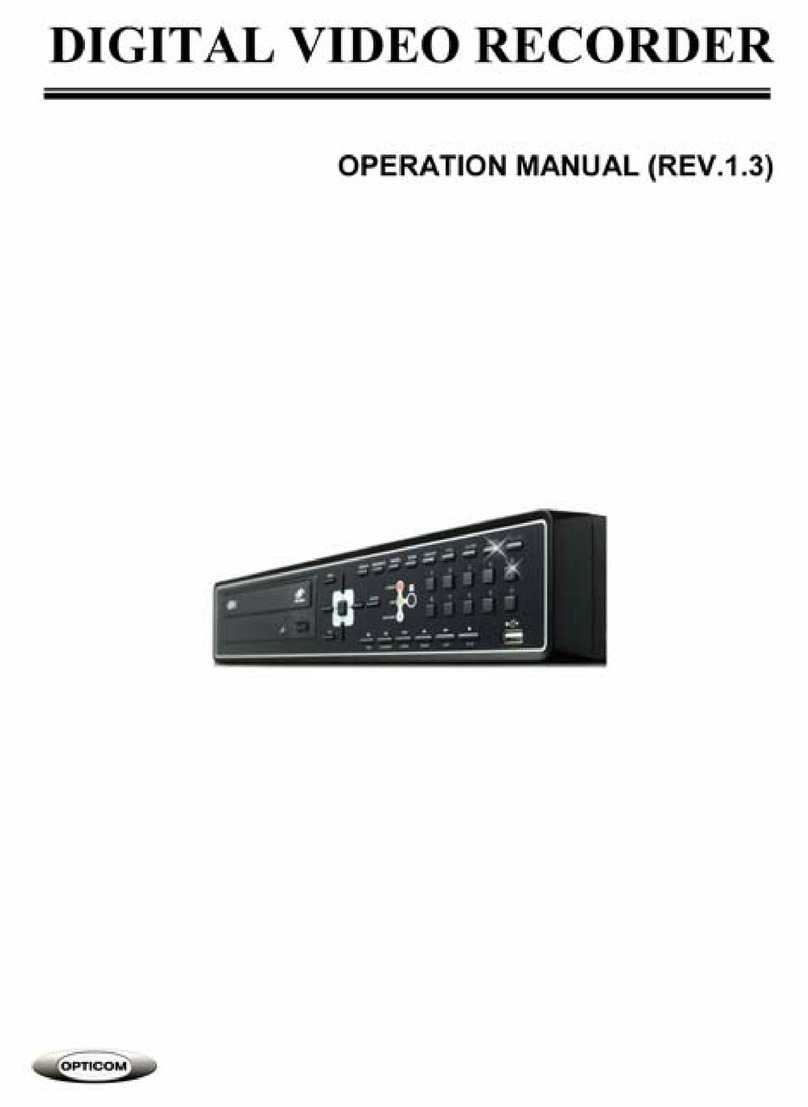
OPTICOM
OPTICOM OWL - REV1.3 manual

